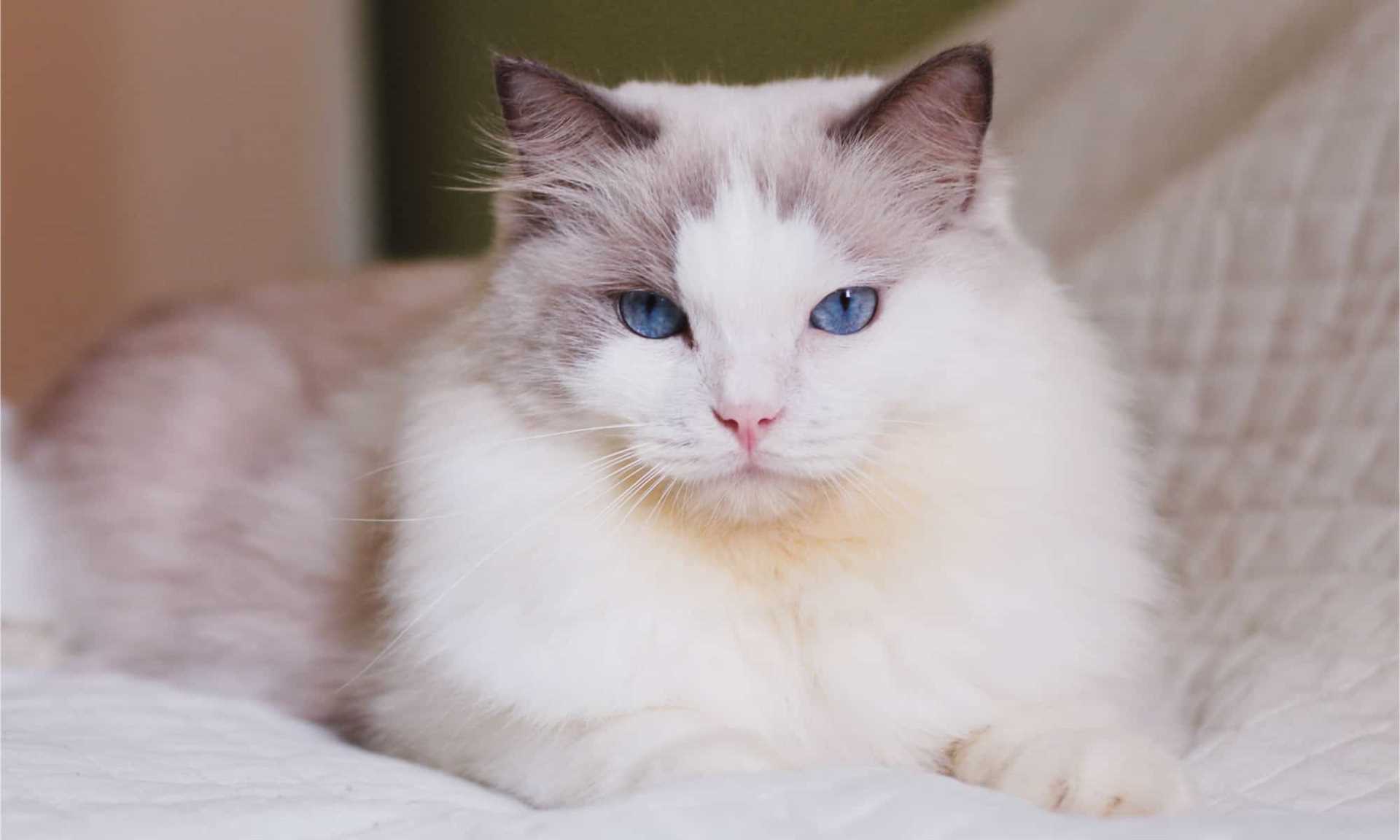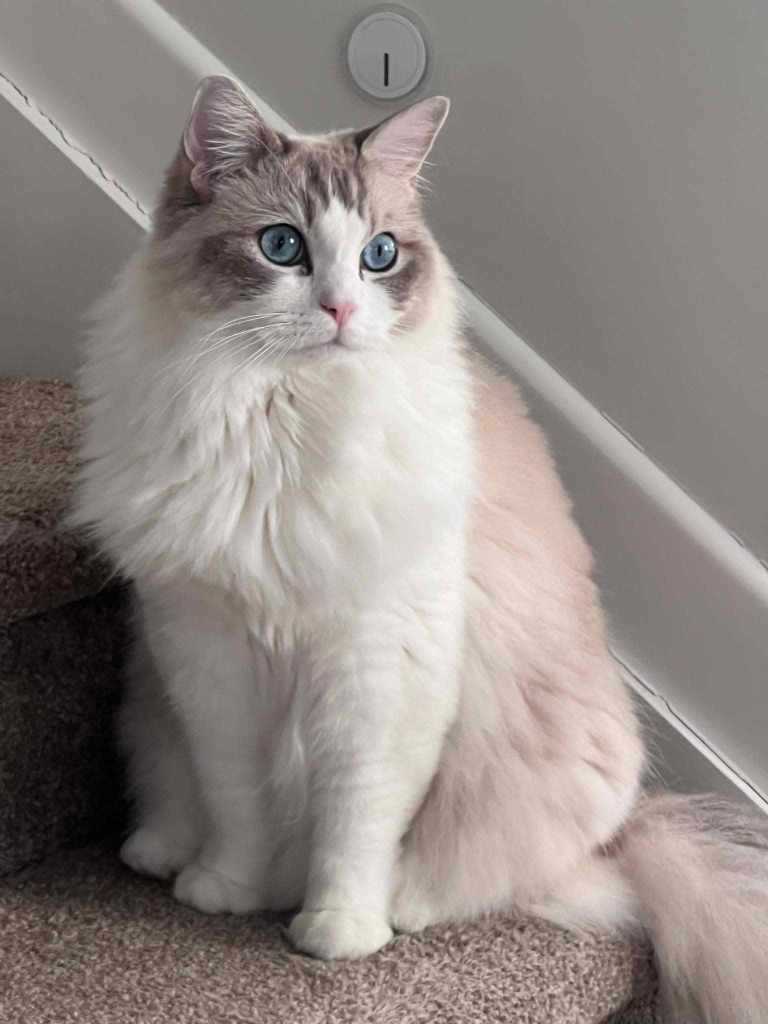While many shades exist, the most uncommon hue among these enchanting companions is the lilac point. This specific coloration features a soft, muted blend of gray and cream, creating an exquisite appearance that stands apart from more common shades.
For those seeking to add a distinct companion to their family, focusing on breeders who specialize in this rare tone is essential. Ensure they follow ethical breeding practices, as responsible breeders prioritize health and temperament, which contributes to the overall quality of these charming pets.
Additionally, understanding the genetics behind this coloration can deepen appreciation for these unique creatures. The lilac point is a product of specific gene combinations, making it a fascinating topic for any enthusiast or potential owner.
Identifying the Rarest Ragdoll Colors in Breeding
For those seeking unique hues in feline companions, focus on shades like lilac and chocolate. These tones are less common in breeding programs, making them highly sought after.
When assessing specific traits, consider the point coloration. Blue and seal points are more prevalent, while colors such as cream and red are harder to find. Breeders specializing in these uncommon shades often possess a deeper understanding of genetics.
Observe the patterns too; bicolor and mitted varieties may attract attention, but true colorpoint patterns can be rarer. Make inquiries with breeders about their specific lineage to gain insights into their breeding practices.
Consider genetic testing for a clearer picture. This can reveal potential color traits that may not be visibly apparent at a young age. Engaging with knowledgeable breeders who prioritize color and lineage will enhance your chances of finding that special companion.
Always verify health clearances as well. Rare colors might be associated with certain genetic traits, so responsible breeding should be a priority for anyone looking to add a unique feline to their family.
Factors Contributing to the Rarity of Certain Ragdoll Colors
To understand why specific hues are uncommon, I focus on genetic variations, breeding practices, and demand. Each element influences the availability of certain shades in the market.
Genetic Variations

Genetics play a pivotal role in determining the shades present in litters. Here are key points:
- Color inheritance is complex, often requiring specific gene combinations.
- Some colors arise from recessive genes, making them less likely to appear.
- Breeders may prioritize popular colors, reducing diversity in breeding programs.
Breeding Practices and Demand
Breeders influence color prevalence through their choices:
- Market preferences drive breeders to focus on sought-after shades.
- Limited breeding of unique colors leads to scarcity.
- Ethical breeding methods often restrict genetic mixing, limiting color outcomes.
Understanding these factors can help prospective owners make informed decisions. If you notice unusual behaviors or health issues, such as why does my cats mouth smell so bad or why does my cat meow non stop, consider discussing them with a vet, as these might relate to genetics as well.
Market Demand and Value of Rare Ragdoll Colors
Prices for unique varieties can soar, often reaching thousands of dollars. Buyers are willing to pay a premium for these exceptional hues, driven by their limited availability and distinctive appearance. It’s not uncommon for certain shades to command prices exceeding $3,000, especially when paired with desirable traits like excellent temperament and breeding lineage.
Buyer Preferences and Trends

Collectors and enthusiasts increasingly seek out specific shades that stand out. Preferences often shift based on social media trends and celebrity endorsements, influencing market dynamics. Engaging with potential buyers through platforms like Instagram or Facebook can significantly boost visibility and demand for unique varieties.
Investment Potential
Investing in uncommon hues can yield substantial returns. As demand continues to rise, values are expected to appreciate over time. Those considering adding these stunning companions to their homes should view them not only as pets but also as potential assets. Careful research into breeding practices and lineage is crucial to ensure the acquisition of a high-value specimen.
Video:
While many shades exist, the most uncommon hue among these enchanting companions is the lilac point. This specific coloration features a soft, muted blend of gray and cream, creating an exquisite appearance that stands apart from more common shades.
For those seeking to add a distinct companion to their family, focusing on breeders who specialize in this rare tone is essential. Ensure they follow ethical breeding practices, as responsible breeders prioritize health and temperament, which contributes to the overall quality of these charming pets.
Additionally, understanding the genetics behind this coloration can deepen appreciation for these unique creatures. The lilac point is a product of specific gene combinations, making it a fascinating topic for any enthusiast or potential owner.
Identifying the Rarest Ragdoll Colors in Breeding
For those seeking unique hues in feline companions, focus on shades like lilac and chocolate. These tones are less common in breeding programs, making them highly sought after.
When assessing specific traits, consider the point coloration. Blue and seal points are more prevalent, while colors such as cream and red are harder to find. Breeders specializing in these uncommon shades often possess a deeper understanding of genetics.
Observe the patterns too; bicolor and mitted varieties may attract attention, but true colorpoint patterns can be rarer. Make inquiries with breeders about their specific lineage to gain insights into their breeding practices.
Consider genetic testing for a clearer picture. This can reveal potential color traits that may not be visibly apparent at a young age. Engaging with knowledgeable breeders who prioritize color and lineage will enhance your chances of finding that special companion.
Always verify health clearances as well. Rare colors might be associated with certain genetic traits, so responsible breeding should be a priority for anyone looking to add a unique feline to their family.
Factors Contributing to the Rarity of Certain Ragdoll Colors
To understand why specific hues are uncommon, I focus on genetic variations, breeding practices, and demand. Each element influences the availability of certain shades in the market.
Genetic Variations

Genetics play a pivotal role in determining the shades present in litters. Here are key points:
- Color inheritance is complex, often requiring specific gene combinations.
- Some colors arise from recessive genes, making them less likely to appear.
- Breeders may prioritize popular colors, reducing diversity in breeding programs.
Breeding Practices and Demand
Breeders influence color prevalence through their choices:
- Market preferences drive breeders to focus on sought-after shades.
- Limited breeding of unique colors leads to scarcity.
- Ethical breeding methods often restrict genetic mixing, limiting color outcomes.
Understanding these factors can help prospective owners make informed decisions. If you notice unusual behaviors or health issues, such as why does my cats mouth smell so bad or why does my cat meow non stop, consider discussing them with a vet, as these might relate to genetics as well.
Market Demand and Value of Rare Ragdoll Colors
Prices for unique varieties can soar, often reaching thousands of dollars. Buyers are willing to pay a premium for these exceptional hues, driven by their limited availability and distinctive appearance. It’s not uncommon for certain shades to command prices exceeding $3,000, especially when paired with desirable traits like excellent temperament and breeding lineage.
Buyer Preferences and Trends

Collectors and enthusiasts increasingly seek out specific shades that stand out. Preferences often shift based on social media trends and celebrity endorsements, influencing market dynamics. Engaging with potential buyers through platforms like Instagram or Facebook can significantly boost visibility and demand for unique varieties.
Investment Potential
Investing in uncommon hues can yield substantial returns. As demand continues to rise, values are expected to appreciate over time. Those considering adding these stunning companions to their homes should view them not only as pets but also as potential assets. Careful research into breeding practices and lineage is crucial to ensure the acquisition of a high-value specimen.
Video:
While many shades exist, the most uncommon hue among these enchanting companions is the lilac point. This specific coloration features a soft, muted blend of gray and cream, creating an exquisite appearance that stands apart from more common shades.
For those seeking to add a distinct companion to their family, focusing on breeders who specialize in this rare tone is essential. Ensure they follow ethical breeding practices, as responsible breeders prioritize health and temperament, which contributes to the overall quality of these charming pets.
Additionally, understanding the genetics behind this coloration can deepen appreciation for these unique creatures. The lilac point is a product of specific gene combinations, making it a fascinating topic for any enthusiast or potential owner.
Identifying the Rarest Ragdoll Colors in Breeding
For those seeking unique hues in feline companions, focus on shades like lilac and chocolate. These tones are less common in breeding programs, making them highly sought after.
When assessing specific traits, consider the point coloration. Blue and seal points are more prevalent, while colors such as cream and red are harder to find. Breeders specializing in these uncommon shades often possess a deeper understanding of genetics.
Observe the patterns too; bicolor and mitted varieties may attract attention, but true colorpoint patterns can be rarer. Make inquiries with breeders about their specific lineage to gain insights into their breeding practices.
Consider genetic testing for a clearer picture. This can reveal potential color traits that may not be visibly apparent at a young age. Engaging with knowledgeable breeders who prioritize color and lineage will enhance your chances of finding that special companion.
Always verify health clearances as well. Rare colors might be associated with certain genetic traits, so responsible breeding should be a priority for anyone looking to add a unique feline to their family.
Factors Contributing to the Rarity of Certain Ragdoll Colors
To understand why specific hues are uncommon, I focus on genetic variations, breeding practices, and demand. Each element influences the availability of certain shades in the market.
Genetic Variations

Genetics play a pivotal role in determining the shades present in litters. Here are key points:
- Color inheritance is complex, often requiring specific gene combinations.
- Some colors arise from recessive genes, making them less likely to appear.
- Breeders may prioritize popular colors, reducing diversity in breeding programs.
Breeding Practices and Demand
Breeders influence color prevalence through their choices:
- Market preferences drive breeders to focus on sought-after shades.
- Limited breeding of unique colors leads to scarcity.
- Ethical breeding methods often restrict genetic mixing, limiting color outcomes.
Understanding these factors can help prospective owners make informed decisions. If you notice unusual behaviors or health issues, such as why does my cats mouth smell so bad or why does my cat meow non stop, consider discussing them with a vet, as these might relate to genetics as well.
Market Demand and Value of Rare Ragdoll Colors
Prices for unique varieties can soar, often reaching thousands of dollars. Buyers are willing to pay a premium for these exceptional hues, driven by their limited availability and distinctive appearance. It’s not uncommon for certain shades to command prices exceeding $3,000, especially when paired with desirable traits like excellent temperament and breeding lineage.
Buyer Preferences and Trends

Collectors and enthusiasts increasingly seek out specific shades that stand out. Preferences often shift based on social media trends and celebrity endorsements, influencing market dynamics. Engaging with potential buyers through platforms like Instagram or Facebook can significantly boost visibility and demand for unique varieties.
Investment Potential
Investing in uncommon hues can yield substantial returns. As demand continues to rise, values are expected to appreciate over time. Those considering adding these stunning companions to their homes should view them not only as pets but also as potential assets. Careful research into breeding practices and lineage is crucial to ensure the acquisition of a high-value specimen.






